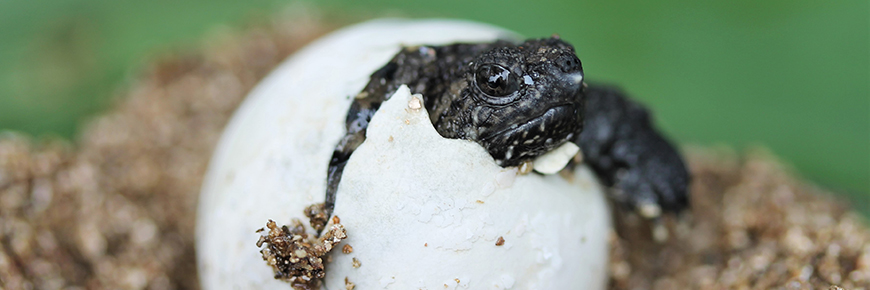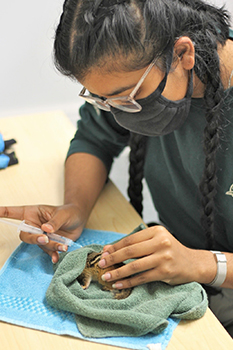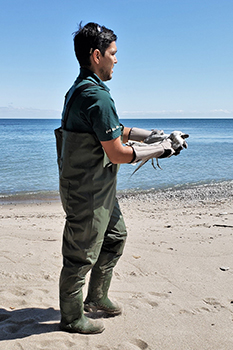
Keeping the LIFE in Wildlife
Rouge National Urban Park
First of its Kind Wildlife Triage Program Launched in Rouge National Urban Park
To Intervene or Not to Intervene

It’s no secret that the most abundant species found in Rouge National Urban Park is humans. Nestled inside the most populous metropolitan area of the country, criss-crossed by major highways, rail corridors, towering hydro lines, and urban development on all sides, Rouge National Urban Park and its Resource Conservation team face unique challenges when it comes to the protection of wildlife.
Every year, the Resource Conservation team responds to many incidents of injured, orphaned, and displaced wildlife. Between 2017-2020, an analysis revealed that 67% of the incidents requiring emergency intervention were caused by humans. This year was no different. After thoughtful consideration of the factors contributing to wildlife injury and mortality in RNUP, the Resource Conservation team decided it was time to ramp up their efforts.
The Agency’s First Wildlife Emergency Response Team (WERT) is Launched
In the spring of 2021, the Wildlife Emergency Response Team (WERT) was launched. The program functions as a temporary wildlife emergency triage and stabilization centre where wildlife can be temporarily housed and receive emergency treatment. The team has the capacity to capture wildlife using various tools, provide life-saving sub-cutaneous rehydration fluids, and administer injectable medication including analgesics, anti-inflammatories, and antibiotics. The team is also trained and equipped to stabilize fractures and body temperature, treat burns, stop bleeds, tube-feed, and rehydrate and seal wounds. Once a wild patient is stable, they are transported to an authorized wildlife custodian for continued medical care and rehabilitation.
Meet our Patients

In 2021 alone, the WERT staff has triaged 16 wildlife patients – two cliff swallows, four turtles, a Canada goose gosling, a ring-billed gull, an eastern chipmunk, two opossum, a groundhog, and three baby skunks. Some animals had been orphaned or abandoned. Others incurred infection or injury such as fractions and wounds through trauma such as near-drowning and collisions with equipment and motor vehicles. In addition to the 16 wildlife patients, the WERT team also rescued two domestic pets abandoned in the park. Many of these animals are now thriving and have been released back into the wild.
Not All Heroes Wear Capes: Some Wear Green and Khakis
These programs are only successful with exemplary dedication by the people who run them. WERT staff-in-training, Mariah Ramlogan and Richard dePaulsen, have trained extensively over the past six months in the capture and handling of wild animals, as well as in medicating, rehydrating, bandaging, and husbandry. They have gone above and beyond to ensure the patients’ needs are met.
Working alongside the WERT program is the Wildlife Co-Existence Program led by Leonardo Cabrera. Leo and his colleagues educate park visitors and residents on strategies to improve human wildlife co-existence and mitigate human-wildlife conflicts. Working hand in hand, these two programs aim to reduce the number of wildlife incidents and, ultimately, wildlife casualties in Canada’s first national urban park.
- Date modified :